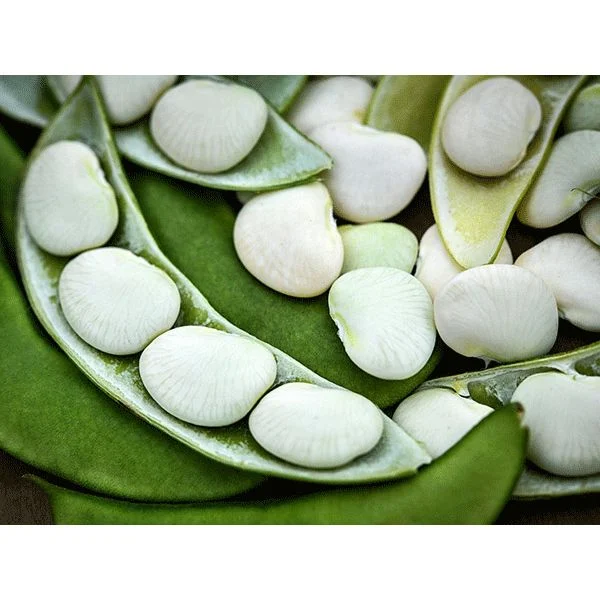Lima beans (Phaseolus lunatus) – also known as butter beans – are easy to identify with their oval, trifoliate leaves and clusters of white or yellow flowers. Once the flowers are pollinated, they produce curved and flatter pods that are slightly different from those of common green beans.
They grow relatively fast and should be ready to harvest in about two to three months, depending on the variety.
It’s important to note that lima beans should always be fully cooked before eating. Raw lima beans and their roots contain toxins that can be harmful to both humans and animals. So make sure to cook them thoroughly to enjoy their delicious taste without any risk.
If you are looking for something you can eat raw, tomatoes are a good option.
Care
Well, caring for these legumes isn’t too difficult, and with a little attention, you’ll soon have a bountiful harvest! Here are some tips to help you get started:
- Light: make sure to plant your lima beans in an area with full sun, as they need at least six hours of direct sunlight daily.
- Soil: well-draining soil that’s slightly acidic to neutral and moderately rich in organic matter is ideal.
- Water: Make sure to keep the soil evenly moist but not soggy until germination, then aim to provide at least 1 inch of water per week.
- Temperature: Lima beans prefer climates that stay between 70 and 80 degrees Fahrenheit for several months. They also don’t like frost, so it’s best to plant them after the last frost date.
Propagation
If you want to propagate lima beans, it’s easy and inexpensive to do so from seed (just like propagating pumpkins). Most gardeners choose to grow lima beans from seed and save them to plant the following year. This is a great way to duplicate successful plants that produced well or tasted great.
- To save seeds, you should allow the pods to dry out on the plant until they are brittle, then cut them off.
- Next, arrange the pods in a single layer and let them dry indoors for at least two weeks in a cool, dry spot with good air circulation.
- Finally, remove the seeds from the pods and store them in an airtight container in a cool, dark, dry place until you’re ready to plant them next season.
- To plant lima beans, wait two weeks after your last frost to ensure the soil temperature is at least 65 degrees Fahrenheit.
- Choose a planting site with loose soil and lots of sun, and avoid planting near Allium family members.
- Plant seeds 1 inch deep and 2 to 4 inches apart, and thin seedlings to 4 to 6 inches apart. Space rows 2 to 3 feet apart, and choose between bush or pole varieties.
- Provide support for pole varieties, and plant four to six seeds on each side of a trellis or teepee.
Common Pests
Frequently Asked Questions
Lima beans should not be eaten raw as it can be lethal due to the high level of cyanide in them. This compound is part of the plant’s defense mechanism.
Do lima beans need a lot of water?
Lima beans need one inch of water per week and that mulching can be beneficial when the soil temperature averages over 60 degrees Fahrenheit to avoid overwatering.
Will lima beans grow in hot weather?
Lima beans can tolerate high daytime temperatures, and even heat-sensitive varieties like Fordhook 242 can produce normal yields in summer greenhouse experiments with reduced night temperatures.
What is the best fertilizer for lima beans?
Lima beans are not heavy feeders, so they do not require a lot of fertilizer. However, they will benefit from Phosphorus and Potassium.
How long does a lima bean take to grow?
Lima beans typically take around 70 to 75 days from planting to maturity. However, the time can vary depending on the specific variety of lima bean, as well as the growing conditions and climate.

